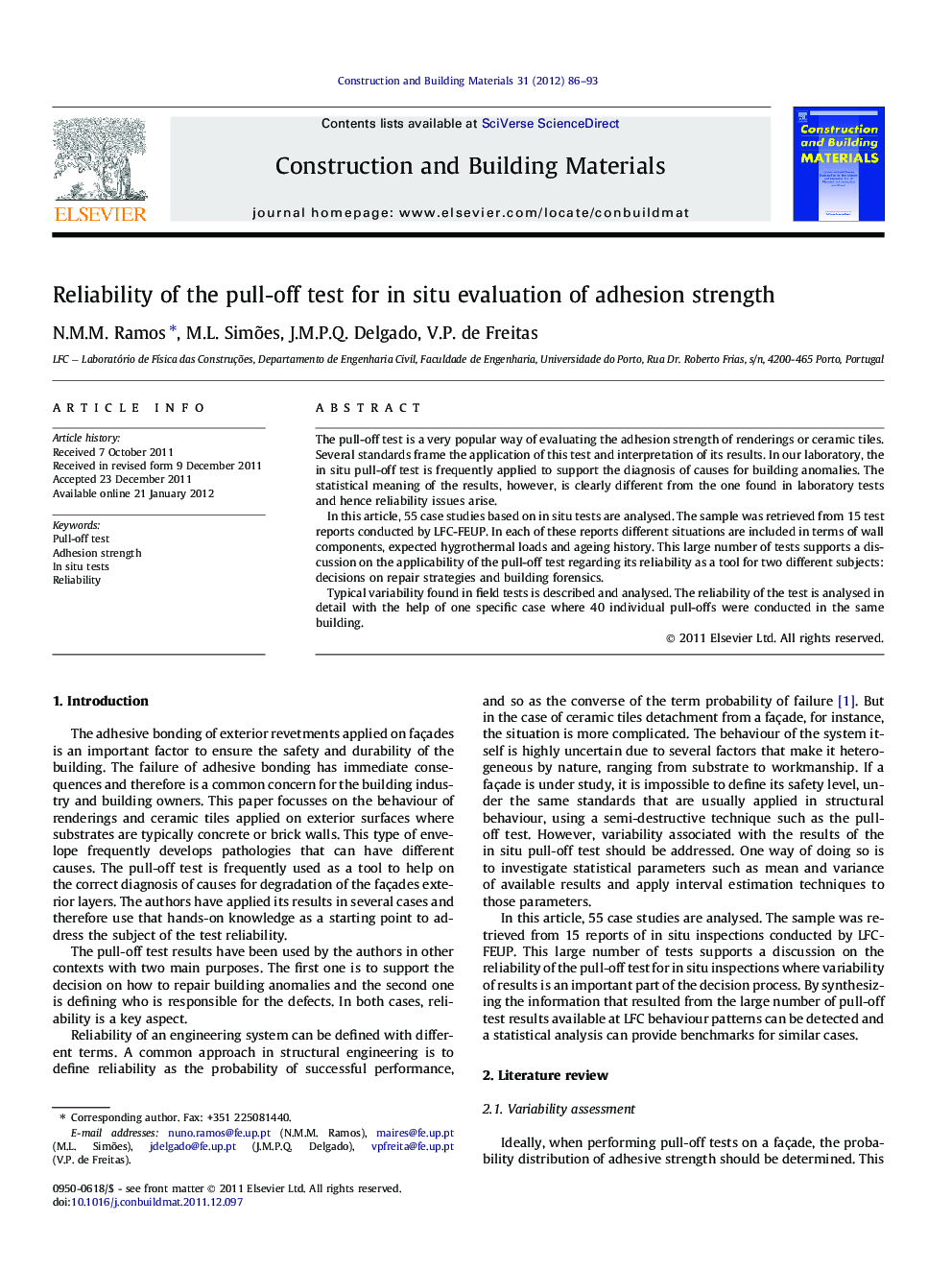| Article ID | Journal | Published Year | Pages | File Type |
|---|---|---|---|---|
| 258923 | Construction and Building Materials | 2012 | 8 Pages |
The pull-off test is a very popular way of evaluating the adhesion strength of renderings or ceramic tiles. Several standards frame the application of this test and interpretation of its results. In our laboratory, the in situ pull-off test is frequently applied to support the diagnosis of causes for building anomalies. The statistical meaning of the results, however, is clearly different from the one found in laboratory tests and hence reliability issues arise.In this article, 55 case studies based on in situ tests are analysed. The sample was retrieved from 15 test reports conducted by LFC-FEUP. In each of these reports different situations are included in terms of wall components, expected hygrothermal loads and ageing history. This large number of tests supports a discussion on the applicability of the pull-off test regarding its reliability as a tool for two different subjects: decisions on repair strategies and building forensics.Typical variability found in field tests is described and analysed. The reliability of the test is analysed in detail with the help of one specific case where 40 individual pull-offs were conducted in the same building.
► Research based on a large sample of in situ test results. ► Portrait of adhesion mean and variability in renderings and cement adhesives. ► Confidence interval estimation for mean and variance as a tool in practice. ► Case study shows how results reliability depend on the number of pull-offs.
